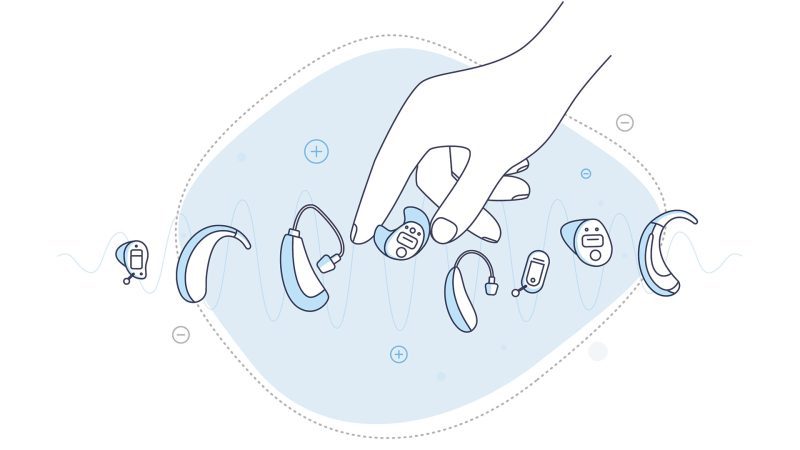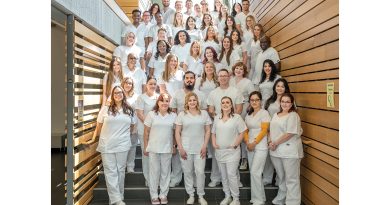Over-the-counter Hearing Aids Expected to Hit the Market in October
Volume Sales
About 30 million adults in the U.S. could benefit from the use of a hearing aid. But, according to a survey by the Hearing Health Foundation, only about 14% of Americans with hearing loss actually use such a device.
The National Academy of Sciences has noted four main reasons why. For some, hearing healthcare is not affordable. For others, the appropriate services are difficult to access, or people don’t know how or where to access them. Others may not want to deal with the stigma of hearing loss, while others don’t recognize they need care, as hearing loss is tends to worsen gradually over time.
The issues of cost and access may improve, however, thanks to a final rule issued on Aug. 16 by U.S. Food and Drug Administration (FDA), establishing a new category of over-the-counter (OTC) hearing aids, enabling consumers with perceived mild to moderate hearing impairment to purchase hearing aids directly from stores or online retailers without the need for a medical exam, prescription, or a fitting adjustment by an audiologist.
“Untreated hearing loss can lead to isolation, and it has been associated with serious conditions such as depression, anxiety, low self-esteem, dementia, reduced mobility, and falls. Yet only one in four adults who could benefit from hearing aids has ever used them.”
The rule is expected to lower the cost of hearing aids, said President Biden, who had issued an executive order calling for the FDA to take steps to allow hearing aids to be sold over the counter and setting a 120-day deadline for action, which the FDA met. In 2017, Congress passed bipartisan legislation requiring the FDA to create a category of OTC hearing aids, but this is the first time it will be implemented. Consumers could see OTC hearing aids available in traditional retail and drugstores as soon as mid-October, when the rule takes effect.
“Reducing healthcare costs in America has been a priority of mine since day one, and this rule is expected to help us achieve quality, affordable healthcare access for millions of Americans in need,” U.S. Health and Human Services Secretary Xavier Becerra said, adding that the FDA’s action “represents a significant milestone in making hearing aids more cost-effective and accessible.”
Biden agreed. “For millions of Americans, hearing aids and the doctor’s visit to get them prescribed are too expensive. In the executive order I issued last year to increase competition in key industries and lower costs, I called on the FDA to finally make hearing aids available over the counter,” the president said. “This action makes good on my commitment to lower costs for American families, delivering nearly $3,000 in savings to American families for a pair of hearing aids and giving people more choices to improve their health and well-being.”
While individuals with permanent hearing impairment can use hearing aids to help make speech and sounds louder, improving the ability to communicate effectively with others, many hearing aids can be expensive, the FDA noted. The final rule aims to stimulate competition and facilitate the sale of safe and effective OTC hearing aids in traditional retail stores or online nationwide, allowing consumers with hearing loss improved access to devices that meet their needs and are less expensive than current options.
According to the National Institute on Deafness and Other Communication Disorders, “hearing loss significantly affects quality of life for tens of millions of adults in the United States and contributes to high healthcare costs. Untreated hearing loss can lead to isolation, and it has been associated with serious conditions such as depression, anxiety, low self-esteem, dementia, reduced mobility, and falls. Yet only one in four adults who could benefit from hearing aids has ever used them. Making hearing healthcare more accessible and affordable is a public-health priority, especially as the number of older adults in the U.S. continues to grow.”
FDA Commissioner Dr. Robert Califf agreed, calling hearing loss and hearing-aid access “a critical public-health issue,” one that hampers the ability of millions of Americans to effectively communicate in their daily social interactions.
“Establishing this new regulatory category will allow people with perceived mild to moderate hearing loss to have convenient access to an array of safe, effective, and affordable hearing aids from their neighborhood store or online.”
“Establishing this new regulatory category will allow people with perceived mild to moderate hearing loss to have convenient access to an array of safe, effective, and affordable hearing aids from their neighborhood store or online,” he added.
The OTC category established in this final rule applies to certain air-conduction hearing aids intended for adults (age 18 and over) who have perceived mild to moderate hearing impairment. Hearing aids that do not meet the requirements for the OTC category (for example, because they are intended for severe hearing impairment or users younger than age 18) are still prescription devices.
Listening to Advice
The FDA finalized the rule after receiving and reviewing more than 1,000 public comments last fall, submitted by consumers, professional associations, hearing-aid manufacturers, public-health organizations and advocacy groups, members of Congress, state agencies, and other stakeholders.
In response to public comments and to assure the safety and effectiveness of OTC hearing aids — which, again, users will typically be handling without the instructions of a doctor — the final rule incorporates several changes from the initial proposed rule, including lowering the maximum sound output to reduce the risk to hearing from over-amplification of sound, revising the insertion depth limit in the ear canal, requiring that all OTC hearing aids have a user-adjustable volume control, and simplifying the phrasing throughout the required device labeling to ensure it is easily understood. The final rule also includes performance specifications and device design requirements specific to OTC hearing aids.
The American Speech-Language-Hearing Assoc. (ASHA) is currently conducting a detailed analysis of the regulations and will soon summarize the guidance and potential practice implications for members. “However, upon initial review, ASHA is pleased with many of the included provisions,” it noted.
For example, ASHA noted that the output limit has been lowered, and devices are required to have a user-adjustable volume control. Additionally, device insertion depth has been more clearly defined (the device must remain 10 mm or greater from the tympanic membrane), and the language used in the warnings and other important information appearing outside and inside the packaging has been simplified. “ASHA appreciates the FDA clarifying, and agreeing with, our interpretation that the rule does not pre-empt state laws requiring an audiological evaluation for minors.”
In its submitted comments to the FDA last fall, ASHA emphasized the importance of an audiological assessment prior to the fitting of any type of hearing aid and urged the FDA to consider several revisions that would more clearly define and strengthen product requirements to ensure consumer safety and device efficacy.
“ASHA is concerned that … there is little to no mention of the benefit of seeking consultation from an audiologist prior to purchasing a hearing aid or if the user does not experience expected benefit from the device,” the association noted after the final rule was released. “ASHA is building partnerships with allied professional groups to educate the public on the benefits of consulting with an audiologist.”
ASHA encourages audiologists to begin utilizing the resources in its OTC Hearing Aid Toolkit (www.asha.org/aud/otc-hearing-aid-toolkit) to prepare to incorporate these devices and the individuals utilizing them into their service-delivery model, adding that “there are also resources to educate the public on the importance of safe and efficacious hearing-loss treatment and appropriate use of OTC hearing aids, promote the value of audiology services, and collaborate with other healthcare professionals to ensure that we are supporting best practice, overall health, physical safety, and quality of life for those that we serve.”
The Hearing Loss Assoc. of America (HLAA) struck a similar balance between enthusiasm and caution.
“We are hopeful that over-the-counter options will inspire some to take a first step to treat their hearing loss sooner. Ultimately this can mean a better quality of life, and avoiding the increased risk of dementia, falls, and isolation associated with untreated hearing loss,” HLAA Executive Director Barbara Kelley said.
She expressed relief that the new over-the-counter class of hearing aids will be significantly less expensive than those currently on the market, and possibly help patients get past cost and stigma as barriers to care. But she still recommended seeing a specialist.
“This is an exciting step, but it’s still important to remember there’s no one-size-fits-all approach to hearing loss,” Kelley said. “For many, a hearing-care professional will still be a part of an effective treatment plan. But opening more options is a big step in the right direction, for a growing problem that affects one in seven Americans.”
“This is an exciting step, but it’s still important to remember there’s no one-size-fits-all approach to hearing loss,” Kelley said. “For many, a hearing-care professional will still be a part of an effective treatment plan. But opening more options is a big step in the right direction, for a growing problem that affects one in seven Americans.” v




